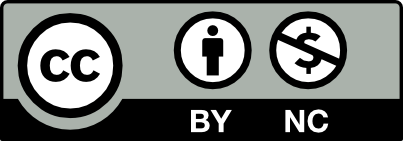

For this assignment, you might need a few types of sources:
| Source Type | Start Here |
|
Scholarly Articles |
Start with the library search bar - advanced search. Try the "peer reviewed" limit. You can also use the recommended library databases. |
|
Books |
Start with the library search bar - advanced search. You can limit to books. Use the find books tab. Consider publisher and author as you decide if a book is scholarly. You might only read and use the chapters most relevant to your research. |
| News/Journalism | New York Times access (see side bar), Nexis Uni (which is a database we subscribe to), or use Google or a news service like Google News or Apple News (know you might hit a paywall with these, ask on chat if you need help with access, and make sure to evaluate your publications!) |
| Other Sources | Organizations, government sites, etc. will often be available on the free web. Use the Evaluate Sources tab to help you decide if this is the best source for you! |
Searching databases is different than searching Google. Distil what you're looking for into a few key terms or phrases, rather than whole sentences.
|
Key Concepts |
Girls | STEM | Support |
| Related Terms |
Women female students Gender
|
Engineering Medicine |
High school programs encouragement
|
Multidisciplinary
Unlimited users.
Updated daily. A comprehensive scholarly, multi-disciplinary full text database, with more than 5,300 full text periodicals, including 4,400 peer-reviewed journals. Offers indexing and abstracts for more than 9,300 journals and a total of 10,900 publications including monographs, reports, conference proceedings, etc.
Features PDF content going back as far as 1865, with the majority of full text titles in native (searchable) PDF format. Searchable cited references are provided for 1,000 journals.
Unlimited users.
Updated regularly. Offers a high-quality, interdisciplinary archive to support scholarship and teaching. Includes archives of over 1,000 leading academic journals across the humanities, social sciences, and sciences, as well as select monographs and other materials valuable for academic work. The entire corpus is full-text searchable, offers search term highlighting, includes high-quality images, and is interlinked by millions of citations and references.
For more information on ebooks see the Ebook Guide
Discipline specific
Unlimited users.
Updated weekly. The Web of Science Core Collection is a group of databases (Science Citation Index Expanded, 1900-present; Social Sciences Citation Index, 1900-present; Arts & Humanities Citation Index, 1975-present) that together cover more than 21,000 journals across all disciplines. The Emerging Sources Citation Index (2005-present) tracks thousands of additional journals that are being considered for inclusion in the main citation indexes. Other files track references from conference proceedings (1990-present) and citations to books (2005-present).
The Web of Science platform currently also provides temporary access to several databases that are not part of the Core Collection, including Biosis Citation Index, Data Citation Index, and Zoological Record.
Unlimited users.
In addition to full-text journals, SocINDEX with Full Text contains informative abstracts for core coverage journals dating as far back as 1895. Includes indexing for books, monographs, conference papers and other non-periodical content sources.
Unlimited users.
Updated regularly. Contains citations and abstracts of worldwide literature (excluding the United States and Canada) from approximately 2,100 journals and (since 1980) books and dissertations on political, diplomatic, economic, social, cultural and intellectual history and related areas of the social sciences and humanities. Covers history dating from 1450 to the present. The database corresponds to the print Historical Abstracts, which was produced by ABC-CLIO.
EID login required
This video, from RMIT University, explains what a database is...
If you don’t see a .pdf of the article you want, click FIND IT AT UT to find it in another database or in print in the Libraries.
If it is only in print in the Libraries or we don’t own the article, click GET A SCAN to have the article emailed to you. This option will take a few days.

This work is licensed under a Creative Commons Attribution-NonCommercial 4.0 Generic License.